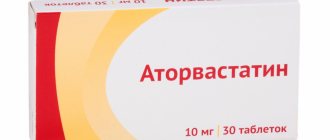Compound
Amitriptyline dragees and tablets contain 10 or 25 mg of the active substance in the form of amitriptyline hydrochloride.
Additional substances in the tablets are: microcrystalline cellulose, talc, lactose monohydrate, silicon dioxide, magnesium stearate, pregelatinized starch.
Additional substances in the dragees are: magnesium stearate, potato starch, talc, polyvinylpyrrolidone, lactose monohydrate.
1 ml of solution contains 10 mg of active substance. Additional substances are: hydrochloric acid (sodium hydroxide), dextrose monohydrate, water for infusion, sodium chloride, benzethonium chloride.
"Amitriptyline": main characteristics
The main component of the drug is the substance of the same name, amitriptyline (for better absorption, it is presented in the form of hydrochloride). Available in 3 forms:
- Tablets (each containing 10 mg or 25 mg of amitriptyline).
- Dragee (same dosage).
- Solution for injections (10 mg of amitriptyline per 1 ml volume).
According to its effects on the body, it is classified as a tricyclic antidepressant. Gives a sedative and thymoleptic effect, also acts as an analgesic (as an additional remedy).
Tablets, dragees and containers with solutions are dispensed only with a prescription. They are stored under normal room conditions (temperature no higher than 25 degrees, moderate humidity) within the general shelf life (3 years from the date of production).
Pharmacodynamics and pharmacokinetics
The drug reduces appetite, eliminates nighttime urinary incontinence, and has an antiserotonin effect. The drug has a strong central and peripheral anticholinergic effect.
The antidepressant effect is achieved by increasing the concentration of serotonin in the nervous system and norepinephrine in synapses. Long-term therapy leads to a decrease in the functional activity of serotonin and beta-adrenergic receptors in the brain. Amitriptyline reduces the severity of depressive symptoms, agitation, anxiety in anxiety-depressive conditions . By blocking H2-histamine receptors in the stomach wall (parietal cells), an antiulcer effect is provided. The medication is able to reduce body temperature and blood pressure during general anesthesia. The drug does not inhibit monoamine oxidases. The antidepressant effect appears after 3 weeks of therapy.
The maximum concentration of the substance in the blood occurs after a few hours, usually after 2-12. Excreted as metabolites in urine. Binds well to proteins.
Action of amitriptyline
The main effect of amitriptyline is antidepressant.
It also has a sedative (calming), hypnotic and anti-anxiety effect. It has no effect on a healthy person with a normal psychological state. These effects appear only in the presence of depression, restlessness, anxiety and insomnia, respectively. In addition to the effects of amitriptyline, there are other effects:
- Anesthetic.
- Vegetative stabilizing.
- Antidiarrheal (fixing).
- Removes psychosomatic symptoms: skin rash, high blood pressure, restores appetite, etc.
- Effective for some forms of enuresis (bedwetting).
Indications for use of Amitriptyline
What are tablets and solution usually prescribed for?
The drug is indicated:
- for depression (agitation, anxiety, sleep disturbances, alcohol withdrawal, organic brain damage, neurotic withdrawal);
- for behavioral disorders, mixed emotional disorders, nocturnal enuresis , chronic pain syndrome (for cancer pathology, postherpetic neuralgia );
- for bulimia nervosa ;
- for migraine (for prevention);
- for ulcerative lesions of the digestive system .
Indications for the use of Amitriptyline in tablets and in other forms of release are the same.
Indications for use
As doctors and scientists accumulate experience in the use of amitriptyline and clarify the mechanisms of development of many diseases, the indications for its use are constantly expanding. Main indications:
- Endogenous depression.
- Depressive psychosis.
- Anxiety disorders: generalized anxiety disorder, panic disorder, phobias, obsessive-compulsive disorder.
- Organic anxiety and depression.
- Schizotypal disorder, schizophrenia with depressive symptoms.
- Addictions (alcohol, drug, polydrug addiction).
- Neuroses.
- Personality disorders (psychopathy).
- Somatoform and psychosomatic diseases.
- Eating disorders.
- Pain syndrome.
- Enuresis.
Contraindications
According to the annotation, the medicine is not used:
- for myocardial infarction ;
- intolerance to the main component;
- for angle-closure glaucoma ;
- acute intoxication with psychoactive, analgesic, hypnotics;
- for acute alcohol intoxication;
- during breastfeeding;
- severe disturbances of intraventricular conduction and antioventricular conduction;
- with pathology of the cardiovascular system;
- with suppression of bone marrow hematopoiesis;
- manic-depressive psychoses;
- bronchial asthma;
- chronic alcoholism;
- decreased motor function of the digestive system;
- stroke;
- liver and kidney pathologies;
- intraocular hypertension;
- urinary retention;
- prostatic hyperplasia;
- with hypotension of the bladder;
- thyrotoxicosis;
- pregnancy.
For epilepsy , Amitriptyline is prescribed with caution.
Side effects of Amitriptyline
Nervous system: agitation, hallucinations, disorientation , fainting, asthenia, drowsiness, anxiety, hypomanic state, increased depression, depersonalization , motor restlessness, increased epileptic seizures, extrapyramidal syndrome , ataxia, myoclonus, paresthesia in the form of peripheral neuropathy, tremor of small muscles, headache.
Anticholinergic effects: increased intraocular pressure, blurred vision, mydriasis, dry mouth, tachycardia , difficulty urinating, paralytic ileus, delirium, confusion, decreased sweating.
Cardiovascular system: instability of blood pressure, intraventricular conduction disorders , arrhythmia, orthostatic hypotension , dizziness, palpitations, tachycardia.
Digestive tract: darkening of the tongue, diarrhea, changes in taste perception, vomiting, heartburn , gastralgia, hepatitis, cholestatic jaundice.
Endocrine system: galactorrhea, hyperglycemia , decreased potency or increased libido, increased size of the mammary glands, gynecomastia , testicular swelling, syndrome of inappropriate ADH secretion, hyponatremia. Hypoproteinemia , pollakiuria, urinary retention, enlarged lymph nodes, hyperpyrexia, swelling, tinnitus, and hair loss are also noted
When discontinuing the drug, unusual agitation, sleep disturbances, malaise, headache, diarrhea, nausea, unusual dreams, restlessness, and irritability are noted. When administered intravenously, a burning sensation, lymphangitis , thrombophlebitis , and an allergic response .
Reviews of the side effects of Amitriptyline are quite frequent. When using the drug, addiction may also occur.
Indications for use
"Amitriptyline" is prescribed by a doctor in the presence of depressive conditions associated with the following manifestations:
- sleep disorders;
- agitation (restlessness);
- high level of anxiety;
- withdrawal syndrome in alcoholism;
- nocturnal enuresis;
- emotional instability;
- organic lesions of brain tissue.
The product is also used to treat such pathologies;
- nocturnal enuresis;
- postherpetic neuralgia;
- severe pain;
- migraine;
- bulimia nervosa;
- ulcers of the digestive system.
Amitriptyline, instructions for use (Method and dosage)
The medicine is taken orally immediately after eating, without chewing, which ensures the least irritation of the stomach walls. The initial dosage is 25-50 mg at night for adults. Within 5 days, the amount of the drug is increased to 200 mg per day in 3 doses. If there is no effect within 2 weeks, the dose is increased to 300 mg.
Solutions are administered slowly intravenously and intramuscularly, 20-40 mg 4 times a day with a gradual transition to oral administration. The course of therapy is no more than 8 months. For prolonged headaches, for migraines, chronic pain syndrome of neurogenic origin, for migraines, 12.5-100 mg per day is prescribed.
Instructions for use of Amitriptyline Nycomed are similar. Before use, be sure to familiarize yourself with the contraindications for the drug.
"Amitriptyline" tablets: instructions for use
When determining the normal dosage, the stage of treatment, the characteristics of the patient’s condition and the form of the drug are taken into account:
- At the first stage, adult patients are given from 25 to 50 mg of the active substance (taken at night).
- Then, over the course of 5 days, the norm is increased to a maximum of 200 mg, and taken 3 times a day.
- If the effect does not occur within 14 days, then the norm is increased to 300 mg.
In the case of a solution, the dosage ranges from 20 to 40 mg at a time (the total number of injections is 4 per day). Then the patient switches from injections to tablets. The general course of treatment lasts a maximum of 8 months in a row.
Attention!
For the treatment of headaches, migraines, and chronic pain syndromes, the dosage can be set in the range from 12.5 mg to 100 mg every day.
Overdose
Manifestations from the nervous system: coma, stupor, increased drowsiness, anxiety, hallucinations, ataxia, epileptic syndrome, choreoathetosis, hyperreflexia, dysarthria, muscle tissue rigidity, confusion, disorientation, impaired concentration, psychomotor agitation.
Manifestations of an overdose of Amitriptyline from the cardiovascular system: disturbance of intracardiac conduction, arrhythmia, tachycardia, drop in blood pressure, shock, heart failure, rarely - cardiac arrest.
Anuria , oliguria, increased sweating, hyperthermia , vomiting, shortness of breath, depression of the respiratory system, and cyanosis are also noted Possible drug poisoning.
To avoid the negative consequences of an overdose, emergency gastric lavage and administration of cholinesterase inhibitors are required in case of severe anticholinergic manifestations. It is also required to maintain water and electrolyte balance, blood pressure levels, control over the functioning of the cardiovascular system, and carry out resuscitation and anticonvulsant measures if necessary. Forced diuresis, as well as hemodialysis, have not proven effective in treating an overdose of Amitriptyline.
Amitriptyline 25 mg No. 50, tablets
Amitriptyline may cause adverse reactions similar to those that occur with other tricyclic antidepressants. Some of the side effects listed below (headache, tremor, difficulty concentrating, constipation and decreased libido) may also be symptoms of depression and will subside as the depression resolves.
- dry mouth, constipation, accommodation disorders, tachycardia, increased sweating, urinary retention;
- orthostatic hypotension, decreased sexual function;
- drowsiness or sedation, tremor, seizures in susceptible individuals, confusion, loss of consciousness, dysarthria;
- risk of developing suicidal behavior/thoughts, mood changes with the onset of a manic episode, manifestations of anxiety;
- weight gain;
- disturbance of conduction and heart rhythm (in high doses);
- breast enlargement, milk secretion from the mammary glands;
- allergic skin reactions;
- hepatitis;
- an increase in the number of eosinophils, a decrease in the number of leukocytes and platelets in the blood.
Adverse reactions in elderly patients. In patients aged 50 years and older, an increased risk of bone fractures was found when taking selective serotonin reuptake inhibitors or tricyclic antidepressants. The mechanism of occurrence of this side effect is not clear.
Special precautions when taking Amitriptyline:
Depression is associated with an increased risk of developing suicidal behavior, self-aggression and suicide. Such a risk may exist until stable remission is achieved and may occur spontaneously throughout the course of therapy, especially in the early stages of remission or when the dosage is changed. When treating with antidepressants, it is necessary to carefully monitor your condition, especially at the beginning of therapy: changes in mood, behavior, clinical deterioration and/or the appearance of suicidal thoughts, the development of side effects. Ask your loved ones to help you assess your condition during treatment. If there is any change in condition or doubt in its assessment, please consult a doctor or tell your loved ones!
If insomnia or nervousness occurs at the beginning of treatment, it is recommended to consult a doctor to reduce the dose of the drug and carry out the necessary symptomatic treatment.
In patients suffering from manic-depressive disorders, the course of the disease may worsen. You should stop taking amitriptyline and consult your doctor for appropriate treatment.
In patients with epilepsy while taking amitriptyline, the seizure threshold may be reduced. If seizures develop, amitriptyline should be discontinued. Consult a doctor for appropriate treatment.
When you stop taking the drug, rare signs of withdrawal syndrome are observed (headache, malaise, nausea, anxiety, sleep disturbances), to prevent which a gradual (over several weeks) dose reduction with careful monitoring of the condition is necessary.
The drug is used with caution in elderly patients.
Due to the presence of lactose in the drug, the drug is contraindicated in persons with congenital galactosemia, impaired absorption of glucose and galactose, or lactose deficiency.
Interaction
A hypotensive effect, respiratory depression , and a depressant effect on the nervous system are observed with the joint prescription of medications that depress the central nervous system: general anesthetics, benzodiazepines, barbiturates, antidepressants and others.
The drug enhances the severity of the anticholinergic effect when taking amantadine , antihistamines, biperiden , atropine , antiparkinsonian drugs, phenothiazine .
The drug enhances the anticoagulant activity of indadione , coumarin derivatives, and indirect anticoagulants. There is a decrease in the effectiveness of alpha-blockers and phenytoin .
Fluvoxamine , Fluoxetine increase the concentration of the drug in the blood. The risk of developing epileptic seizures increases, and the central anticholinergic and sedative effects also increase when combined with benzodiazepines, phenothiazines, and anticholinergics.
Simultaneous use of methyldopa , reserpine , betanidine , guanethidine , clonidine reduces the severity of their hypotensive effect.
Delirium develops when taking acetaldehydrogenase , Disulfiram . phenylephrine , norepinephrine , epinephrine , and isoprenaline on the cardiovascular system . The risk of hyperpyrexia increases when taking antipsychotics and m-anticholinergics.
Amitriptyline
Concomitant use of amitriptyline and MAO inhibitors can cause serotonin syndrome (agitation, confusion, tremor, myoclonus, hyperthermia are possible).
Amitriptyline can be prescribed 14 days after stopping treatment with irreversible MAO inhibitors and at least 1 day after stopping therapy with the reversible MAO type A inhibitor, moclobemide. MAO inhibitors can be prescribed 14 days after stopping amitriptyline.
Amitriptyline may enhance the effects of alcohol, barbiturates and other CNS depressants.
Since tricyclic antidepressants, including amitriptyline, can enhance the effect of anticholinergic drugs on the organs of vision, central nervous system, intestines and bladder, their simultaneous use should be avoided due to the risk of developing paralytic ileus and hyperpyrexia.
When taking tricyclic antidepressants in combination with anticholinergic drugs or antipsychotics, especially in hot weather, hyperpyrexia may develop.
Amitriptyline may enhance the cardiovascular effects of epinephrine, ephedrine, isoprenaline, norepinephrine, phenylephrine and phenylpropanolamine; therefore, anesthetics, decongestants and other drugs containing these substances should not be used simultaneously with amitriptyline.
May reduce the antihypertensive effect of guanethidine, betanidine, reserpine, clonidine and methyldopa.
When taking tricyclic antidepressants simultaneously, it is necessary to adjust antihypertensive therapy.
When used together with antihistamines (clonidine), the inhibitory effect on the central nervous system may be enhanced; with drugs that cause extrapyramidal reactions - an increase in the severity and frequency of extrapyramidal effects.
Concomitant use of amitriptyline and drugs that prolong the QT interval (antiarrhythmics (quinidine), antihistamines (astemizole and terfenadine), some antipsychotics (cisapride, halofantrine and sotalol, especially pimozide and sertindole)) increases the risk of developing ventricular arrhythmia.
Antifungal drugs, for example, fluconazole, terbinafine, increase the concentration of tricyclic antidepressants in the blood serum and, accordingly, their toxicity.
Possible fainting and the development of paroxysms of ventricular tachycardia ( Torsade de Pointes
).
Barbiturates and other enzyme inducers, such as rifampicin and carbamazepine, can increase the metabolism of tricyclic antidepressants, and as a result, reduce the concentration of tricyclic antidepressants in the blood plasma and reduce their effectiveness.
When amitriptyline is used together with phenytoin, the metabolism of the latter is inhibited, and the risk of its toxic effects (ataxia, hyperreflexia, nystagmus, tremor) increases.
When starting the use of amitriptyline in patients receiving phenytoin, the concentration of the latter in the blood plasma should be monitored due to an increased risk of inhibition of its metabolism. At the same time, the therapeutic effect of amitriptyline should be monitored, because your dose may need to be increased.
Preparations of St. John's wort reduce the AUC0-12 hours and the maximum concentration of amitriptyline in the blood plasma by approximately 20% due to the activation of the hepatic metabolism of amitriptyline by the CYP3A4 isoenzyme.
This combination can be used with amitriptyline dose adjustment depending on the results of measuring its concentration in the blood plasma.
With simultaneous use of valproic acid, the clearance of amitriptyline from blood plasma decreases, which can lead to an increase in the concentration of amitriptyline and its metabolite, nortriptyline. When co-administering amitriptyline and valproic acid, serum concentrations of amitriptyline and nortriptyline should be monitored. Amitriptyline dose reduction may be required.
When used simultaneously with cimetidine, methylphenidate and calcium channel blockers, it is possible to slow down the metabolism of amitriptyline, increase its concentration in the blood plasma and develop toxic effects.
When co-prescribed with antipsychotics, it should be taken into account that tricyclic antidepressants and antipsychotics mutually inhibit each other's metabolism, reducing the threshold for convulsive readiness.
With the simultaneous use of amitriptyline and indirect anticoagulants (coumarin or indadione derivatives), the anticoagulant activity of the latter may increase.
Amitriptyline may enhance depression caused by glucocorticoids (GCS).
When used together with anticonvulsants, it is possible to enhance the inhibitory effect on the central nervous system, reduce the threshold of convulsive activity (when used in high doses) and reduce the effectiveness of the latter.
Concomitant use with drugs for the treatment of thyrotoxicosis increases the risk of developing agranulocytosis.
Due to the risk of arrhythmias, special caution must be exercised when prescribing amitriptyline to patients with hyperthyroidism or patients receiving thyroid medications.
Fluoxetine and fluvoxamine may increase plasma concentrations of amitriptyline (a dose reduction of amitriptyline may be required).
When used together with anticholinergic blockers, phenothiazines and benzodiazepines, a mutual enhancement of the sedative and central anticholinergic effects and an increased risk of epileptic seizures (lowering the threshold of convulsive activity) is possible.
Estrogen-containing oral contraceptives and estrogens may increase the bioavailability of amitriptyline. A dose reduction of either estrogen or amitriptyline may be necessary to restore efficacy or reduce toxicity. However, discontinuation of estrogen-containing oral contraceptives may be necessary. In this case, it is necessary to discuss the possibilities of contraception with your gynecologist.
Concomitant use with disulfiram and other acetaldehydrogenase inhibitors may increase the risk of developing psychotic conditions and confusion.
With the simultaneous use of amitriptyline in a high dose and lithium preparations for more than six months, the development of seizures and cardiovascular complications is possible. It is also possible that signs of a neurotoxic effect may occur in the form of tremor, memory impairment, distractibility, disorganization of thinking, even with normal lithium concentrations in the blood and average doses of amitriptyline.
special instructions
Before carrying out therapy, monitoring blood pressure levels is mandatory.
Parenteral Amitriptyline is administered exclusively under the supervision of a physician in a hospital setting. In the first days of treatment it is necessary to observe bed rest. A complete abstinence from ethanol intake is required.
Abrupt refusal of therapy can cause withdrawal syndrome.
The drug at a dose of more than 150 mg per day leads to a decrease in the threshold of convulsive activity, which is important to consider in the development of epileptic seizures in patients with a predisposition.
It is possible to develop hypomanic or manic states in persons with cyclical, affective disorders during the depressive phase.
If necessary, treatment is resumed with small doses after relief of these conditions.
thyrotoxicosis when treating individuals taking thyroid hormone medications due to the possible risk of cardiotoxic effects.
The medication can provoke the development of paralytic intestinal obstruction in elderly people, as well as those prone to chronic constipation.
It is imperative to warn anesthesiologists about taking Amitriptyline before performing local or general anesthesia.
Long-term therapy provokes the development of caries .
riboflavin may increase .
Amitriptyline passes into breast milk and causes increased drowsiness in infants.
The medication affects driving.
Instructions for use AMITRIPTYLINE
When ethanol is used together with drugs that depress the central nervous system (including antidepressants, barbiturates, benzadiazepines and general anesthetics), a significant increase in the depressant effect on the central nervous system, respiratory depression and hypotensive effect is possible. Increases sensitivity to drinks containing ethanol. Increases the m-anticholinergic effect of drugs with such activity (for example, phenothiazines, antiparkinsonian drugs, amantadine, atropine, biperiden, H1-histamine receptor blockers), which increases the risk of side effects (from the central nervous system, the organ of vision, intestines and urinary bubble).
When used together with H1-histamine receptor blockers, clonidine - increased inhibitory effect on the central nervous system; with atropine - increases the risk of paralytic intestinal obstruction; with drugs that cause extrapyramidal reactions - an increase in the severity and frequency of extrapyramidal effects. With the simultaneous use of amitriptyline and indirect anticoagulants (coumarin or indadione derivatives), the anticoagulant activity of the latter may increase.
Amitriptyline may enhance depression caused by glucocorticosteroids.
When used together with anticonvulsants, it is possible to enhance the inhibitory effect on the central nervous system, reduce the threshold of convulsive activity (when used in high doses) and reduce the effectiveness of the latter.
Medicines used to treat thyrotoxicosis increase the risk of developing agranulocytosis.
Reduces the effectiveness of phenytoin and alpha-blockers.
Inhibitors of microsomal oxidation (cimetidine) prolong T1/2, increase the risk of developing toxic effects of amitriptyline (a dose reduction of 20-30% may be required), inducers of microsomal liver enzymes (barbiturates, carbamazipine, phenytoin, nicotine and oral contraceptives) reduce plasma concentrations and reduce the effectiveness of amitriptyline.
Fluxetine and fluvoxamine increase plasma concentrations of amitriptyline (a 50% reduction in amitriptyline dose may be required).
When used together with anticholinergic blockers, phenothiazines and benzodiazepines, there is a mutual enhancement of the sedative and central anticholinergic effects and an increased risk of epileptic seizures (lowering the threshold of convulsive activity); Phenothiazines may also increase the risk of neuroleptic malignant syndrome.
With the simultaneous use of amitriptyline with clonidine, guanethidine, betanidine, reserpine and methyldopa - a decrease in the hypotensive effect of the latter; with cocaine - the risk of developing cardiac arrhythmias.
Estrogen-containing oral contraceptives and estrogens may increase the bioavailability of amitriptyline; antiarrhythmic drugs (such as quinidine) increase the risk of developing rhythm disturbances (possibly slowing down the metabolism of amitriptyline).
Concomitant use with disulfiram and other acetaldehydrogenase inhibitors provokes delirium.
Incompatible with MAO inhibitors (increased frequency of periods of hyperpyrexia, severe convulsions, hypertensive crises and patient death are possible).
Pimozide and probucol may increase cardiac arrhythmias, which is manifested by prolongation of the QT interval on the ECG.
It enhances the effect of epinephrine, norepinephrine, isoprenaline, ephedrine and phenylephrine on the cardiovascular system (including when these drugs are part of local anesthetics) and increases the risk of developing heart rhythm disturbances, tachycardia, and severe arterial hypertension.
When co-administered with alpha-adrenergic agonists for intranasal administration or for use in ophthalmology (with significant absorption), it may enhance the vasoconstrictor effect of the latter.
When taken together with thyroid hormones, there is a mutual enhancement of the therapeutic effect and toxic effects (including cardiac arrhythmias and a stimulating effect on the central nervous system).
M-anticholinergic drugs and antipsychotic drugs (neuroleptics) increase the risk of developing hyperpyrexia (especially in hot weather).
When co-administered with other hematotoxic drugs, increased hematotoxicity is possible.
Amitriptyline analogues
Level 4 ATC code matches:
Doxepin
Ladisan
Ludiomil
Melipramine
Anafranil
Analogues of the drug are:
- Saroten
- Amitriptyline hydrochloride
Amitriptyline price, where to buy
The price of Amitriptyline in 25 mg tablets in Russia is about 30-40 rubles for 50 pieces.
- Online pharmacies in RussiaRussia
- Online pharmacies in UkraineUkraine
- Online pharmacies in KazakhstanKazakhstan
ZdravCity
- Amitriptyline solution for intravenous and intramuscular administration.
10 mg/ml 2 ml 10 pcs. Federal State Unitary Enterprise Moscow Endocrine Plant 48 rub. order - Amitriptyline tablets 25 mg 50 pcs. OzonOzon LLC
57 RUR order
- Amitriptyline tab. 25mg No. 50Ozon LLC
69 RUR order
Pharmacy Dialogue
- Amitriptyline (25 mg tablet No. 50) Ozone LLC
57 RUR order
- Amitriptyline (25 mg tablet No. 50) Ozone LLC
60 rub. order
- Amitriptyline (amp. 10 mg/ml 2 ml No. 10) Moscow Endocrine Plant
53 RUR order
- Amitriptyline (25 mg tablet No. 50) Moscow Endocrine Plant
30 rub. order
- Amitriptyline (25 mg tablet No. 50) DHF JSC
62 RUR order
show more
Pharmacy24
- Amitriptyline 25 mg No. 50 tablets PrAT “Technolog”, Uman, Cherkasy region, Ukraine
20 UAH. order - Amitriptyline 25 mg N25 tablets TOV Doslidniy, Ukraine/TOV FC Zdorovya, Ukraine
13 UAH order
PaniPharmacy
- Amitriptyline tablets Amitriptyline h/x tablets. w/o 0.025g No. 50 control. cell unitary enterprise Ukraine, OZ GNTsLS LLC
23 UAH order
- Amitriptyline ampoule Amitriptyline liquid solution d/in. 10mg/ml amp. 2ml No. 10 Ukraine, Health of the people LLC
89 UAH order
- Amitriptyline tablets Amitriptyline h/x tablets. 0.025g No. 25 Ukraine, OZ GNTsLS LLC
15 UAH order
- Amitriptyline liquid solution d/in. 1% amp. 2ml No. 10 Ukraine, OZ GNTsLS
87 UAH order
- Amitriptyline tablets Amitriptyline h/x tablets. 0.025g No. 50 Ukraine, Health of the people LLC
21 UAH order
show more



